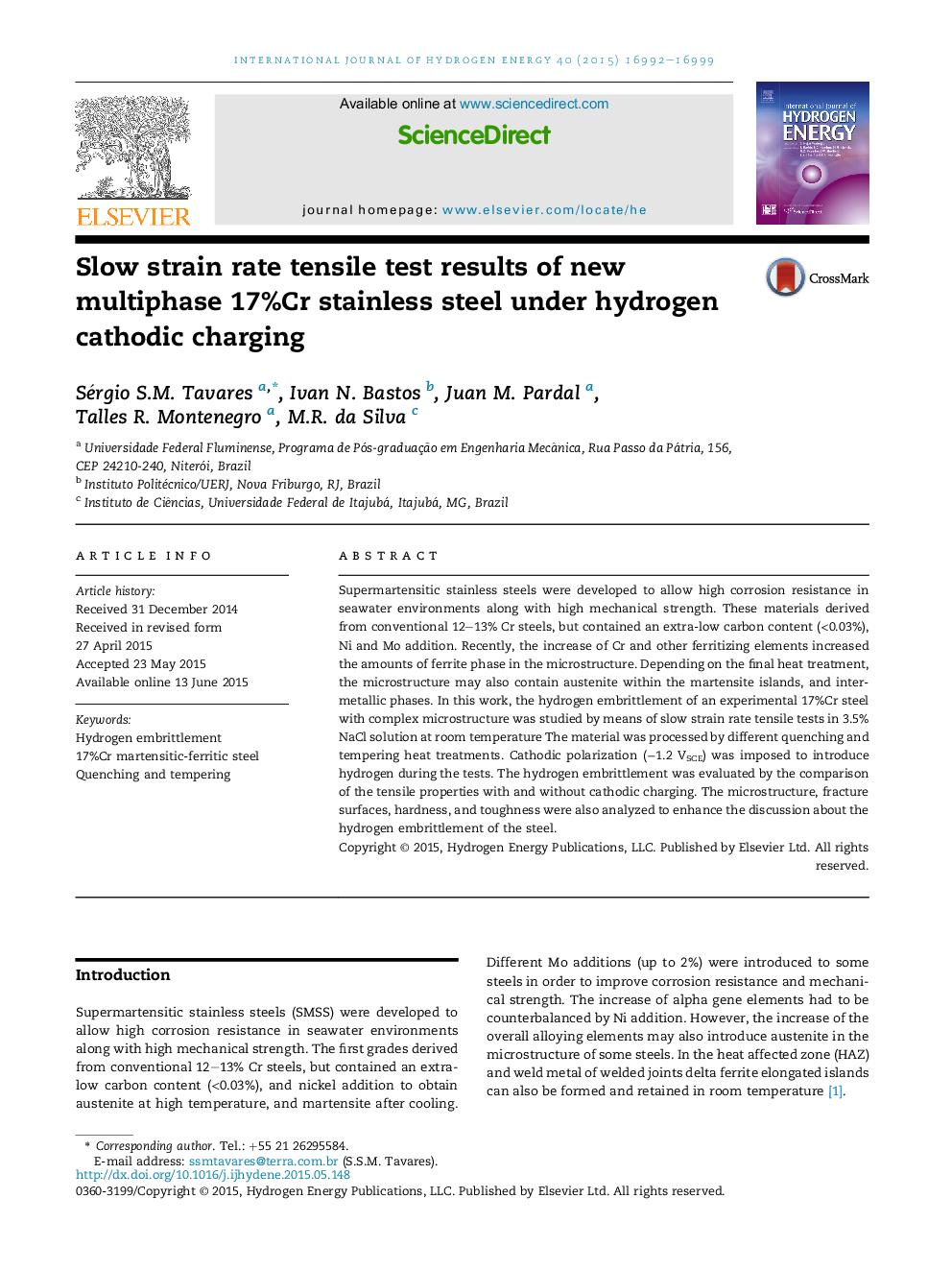| Article ID | Journal | Published Year | Pages | File Type |
|---|---|---|---|---|
| 1278397 | International Journal of Hydrogen Energy | 2015 | 8 Pages |
•Tendency of 17%Cr martensitic–ferritic steel to hydrogen embrittlement was studied.•The steel contain a microstructure of martensite, ferrite, austenite and carbides.•Quenching and tempering at 650 °C resulted in the lower hydrogen embrittlement.•Hydrogen embrittlement resistance decreased with double tempering treatment.•Tempering at 500 °C caused hardening, and increased the hydrogen embrittlement.
Supermartensitic stainless steels were developed to allow high corrosion resistance in seawater environments along with high mechanical strength. These materials derived from conventional 12–13% Cr steels, but contained an extra-low carbon content (<0.03%), Ni and Mo addition. Recently, the increase of Cr and other ferritizing elements increased the amounts of ferrite phase in the microstructure. Depending on the final heat treatment, the microstructure may also contain austenite within the martensite islands, and intermetallic phases. In this work, the hydrogen embrittlement of an experimental 17%Cr steel with complex microstructure was studied by means of slow strain rate tensile tests in 3.5% NaCl solution at room temperature The material was processed by different quenching and tempering heat treatments. Cathodic polarization (−1.2 VSCE) was imposed to introduce hydrogen during the tests. The hydrogen embrittlement was evaluated by the comparison of the tensile properties with and without cathodic charging. The microstructure, fracture surfaces, hardness, and toughness were also analyzed to enhance the discussion about the hydrogen embrittlement of the steel.
